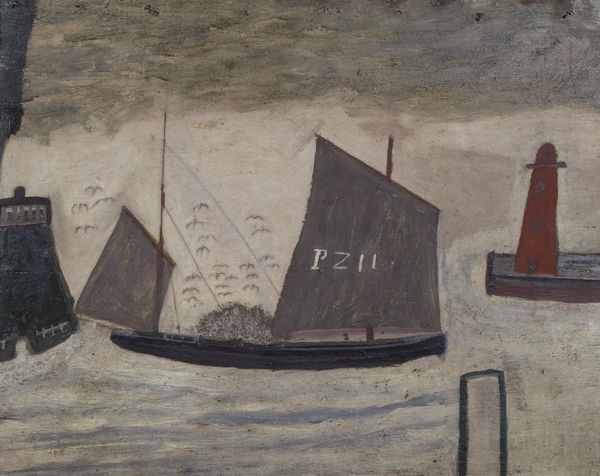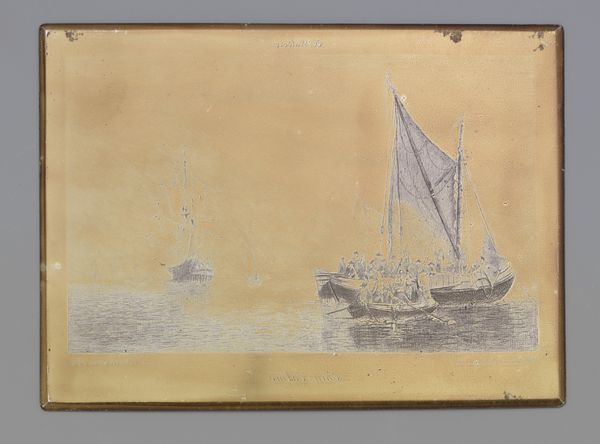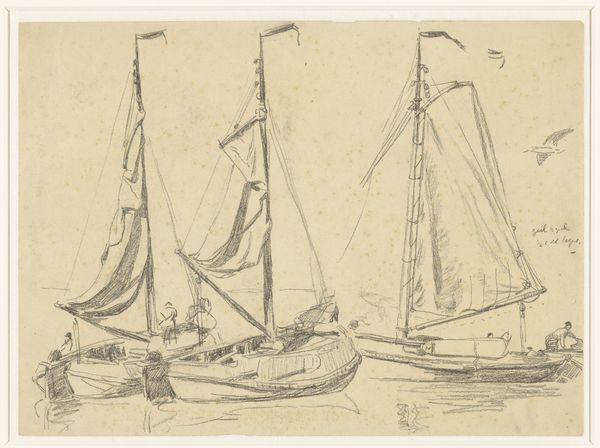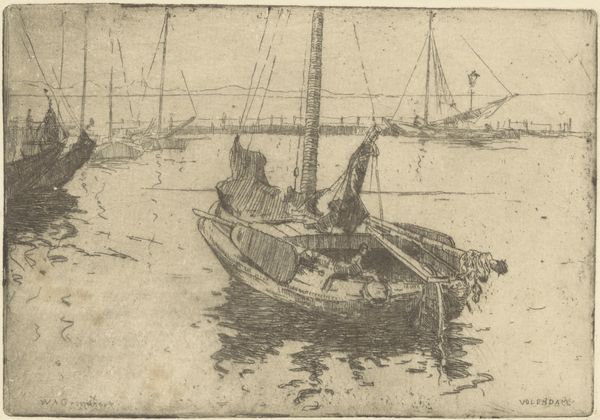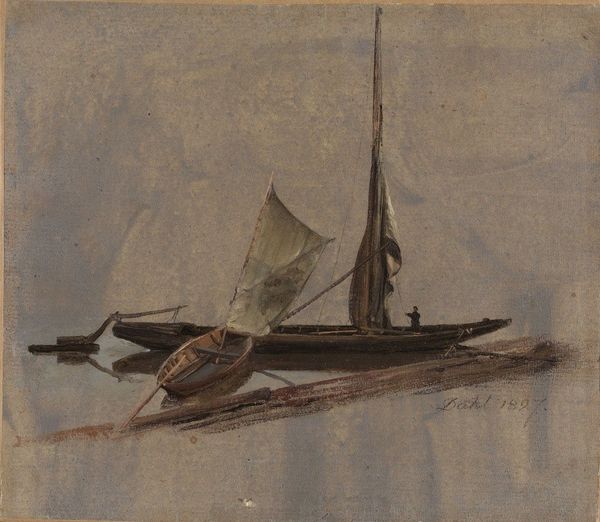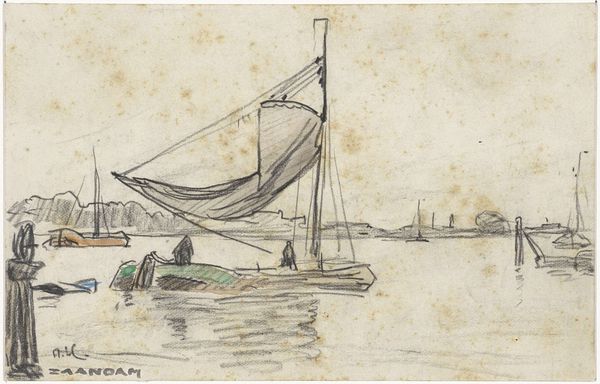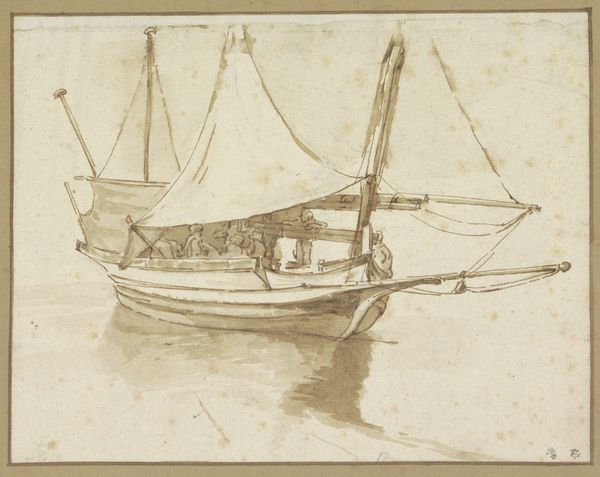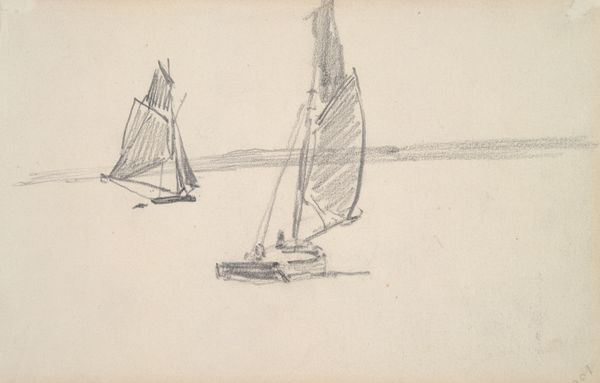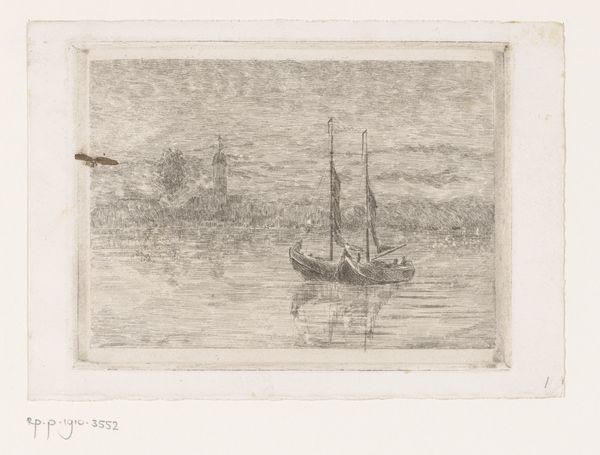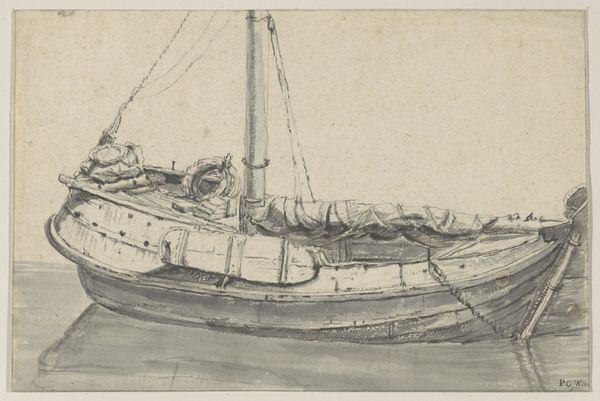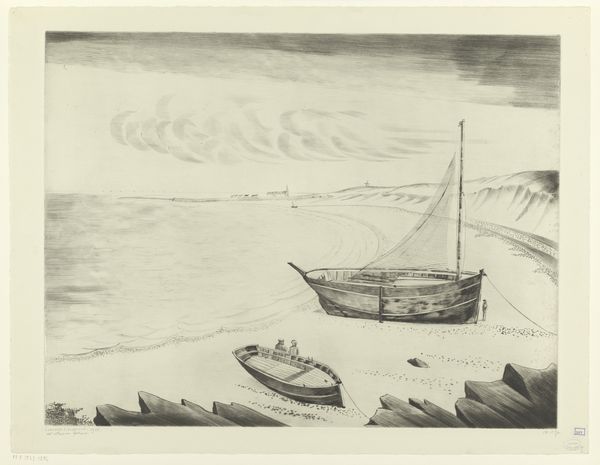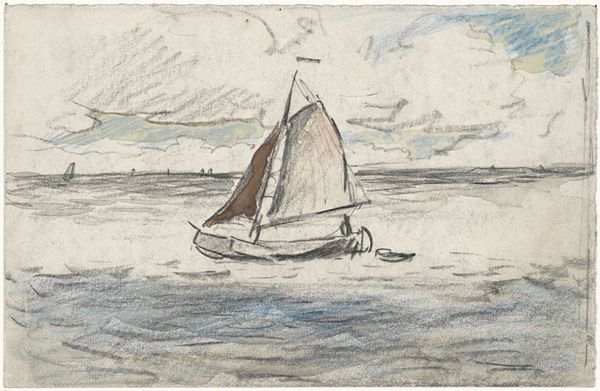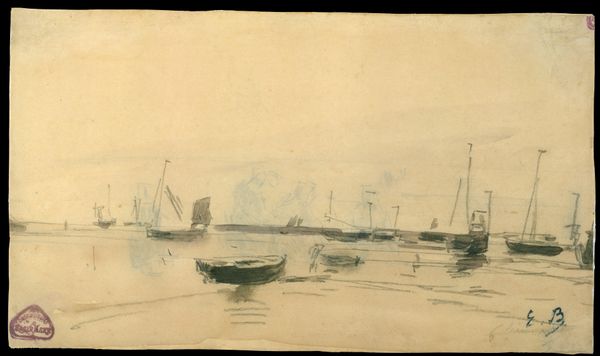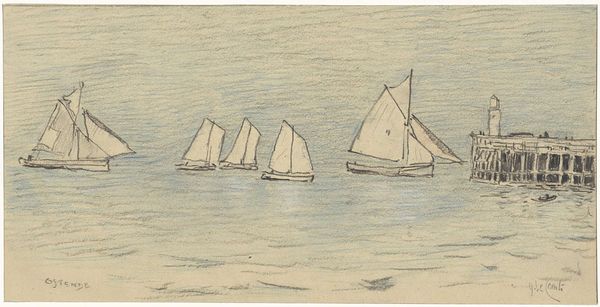
Dimensions: support: 213 x 305 mm
Copyright: CC-BY-NC-ND 4.0 DEED, Photo: Tate
Curator: Here we have Alfred Wallis’s "Two Boats," part of the Tate collection, an evocative piece rendered on cardboard. Editor: There’s a primal simplicity to it; a child-like rendering that somehow speaks volumes about solitude and the sea. Curator: The composition, while seemingly naive, hinges on the juxtaposition of horizontal planes—water, land, sky—and the vertical thrust of the masts. The artist seems less concerned with accurate representation and more with the interplay of form and color. Editor: And the boat as symbol, so potent. Wallis, a mariner himself, imbues them with a longing, a yearning for connection to place, but also a recognition of the sea’s indifference. A return to the womb or the grave, depending on your perspective. Curator: Precisely, the unmodulated color fields accentuate the painting’s flatness. It resists depth, inviting contemplation on the surface itself. Editor: It’s a visual poem, hinting at deeper currents of memory and experience. It echoes countless tales of loss and the struggle for survival. Curator: A fitting end, I think. Editor: Indeed, a potent visual elegy, distilled to its essence.
Comments
Join the conversation
Join millions of artists and users on Artera today and experience the ultimate creative platform.
tate 6 months ago
⋮
Alfred Wallis was a seaman, ice cream seller and rag-and-bone man before he took up painting in old age. He said he painted ‘what used to be’ and many of his works depict a remembered past.In 1928 he met professional artists Ben Nicholson and Christopher Wood, for whom Wallis’s work represented an instinctive and naïve folk art. As such, Wallis seemed to belong to the tradition of rustic characters common in literature, and represented a link to an apparently timeless English culture. Gallery label, July 2007
